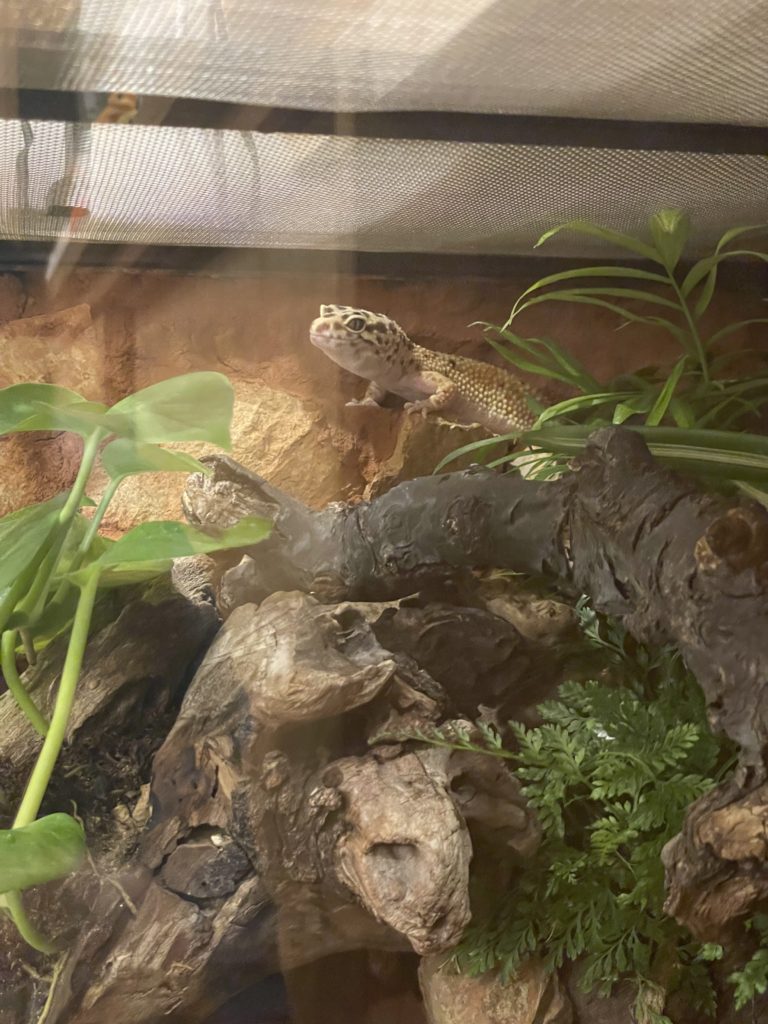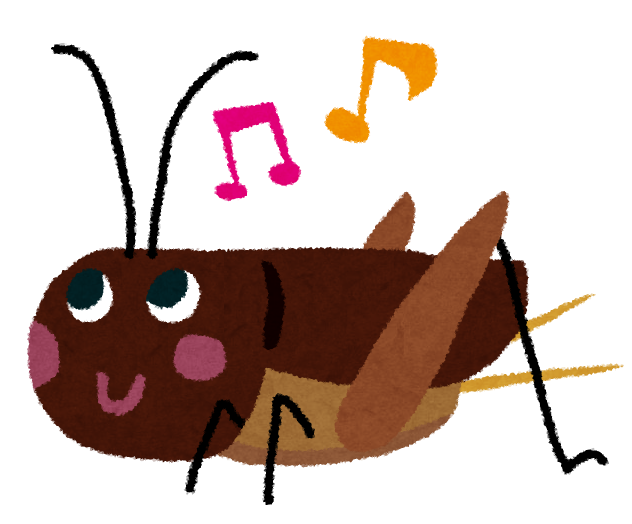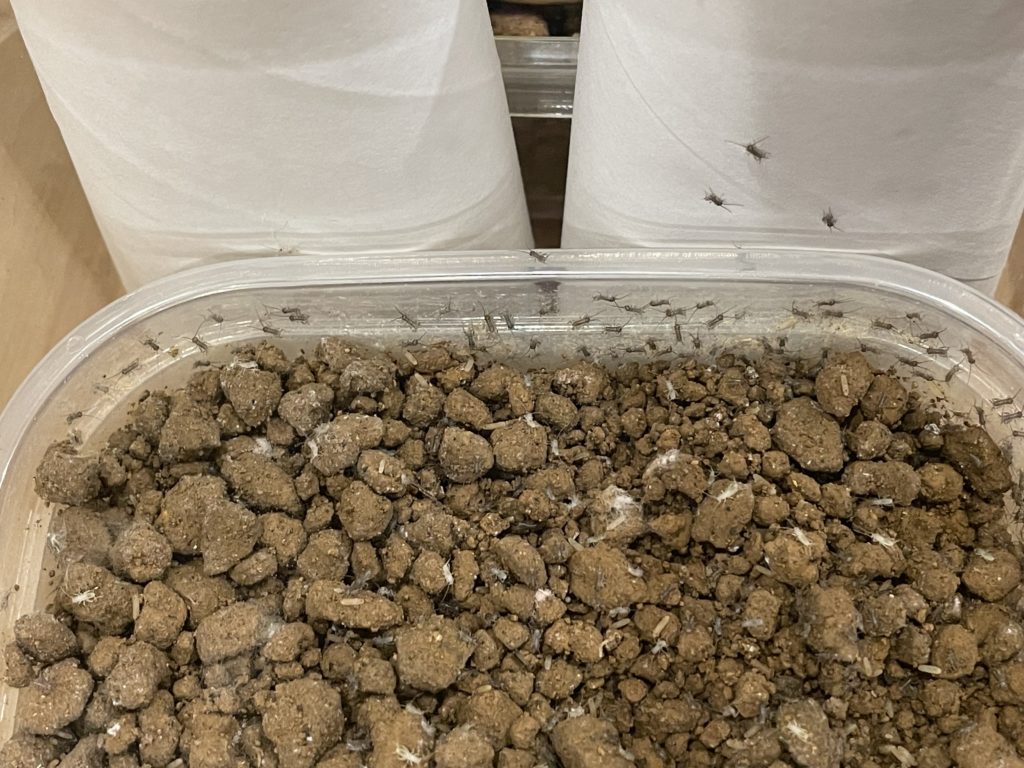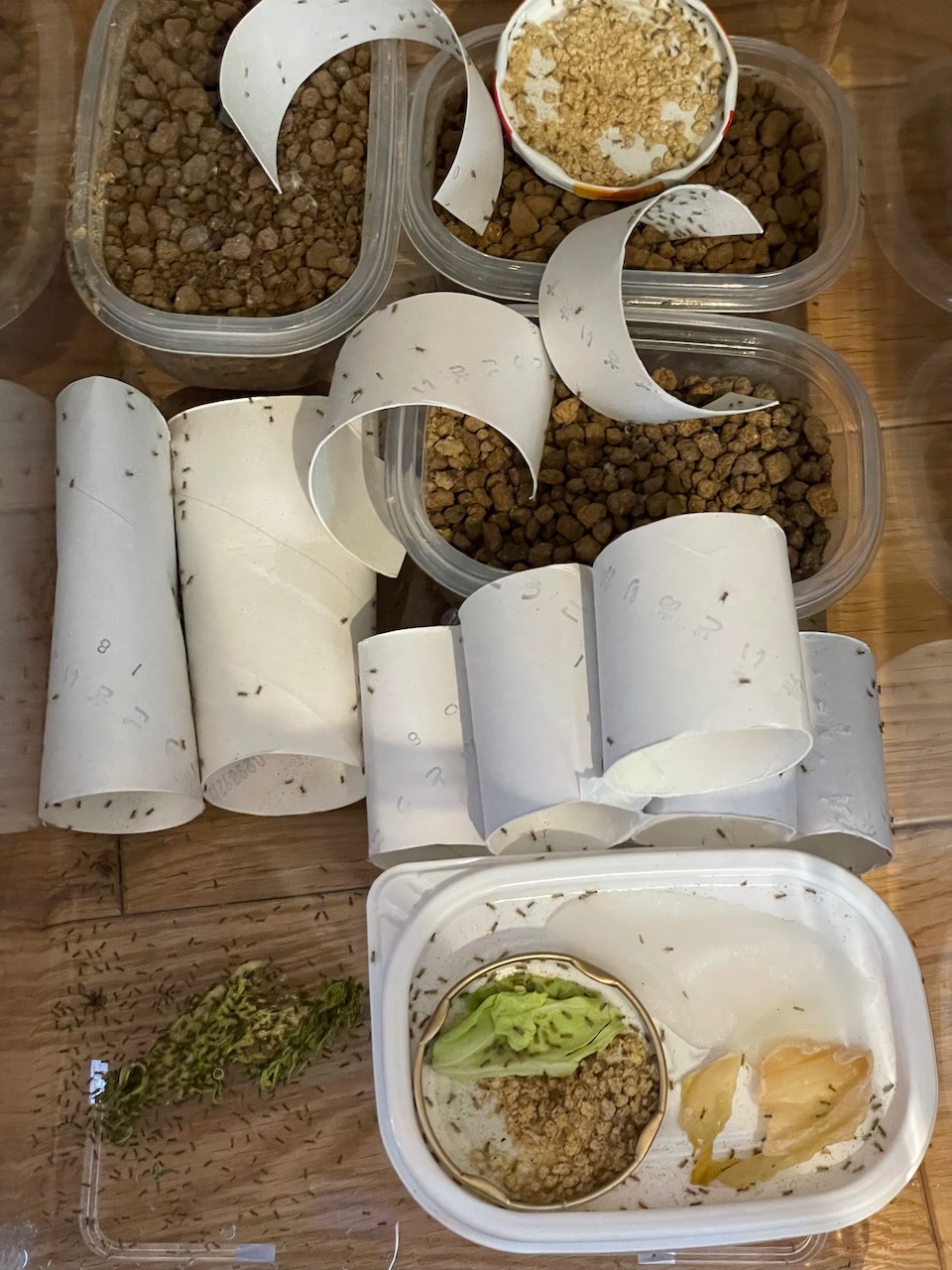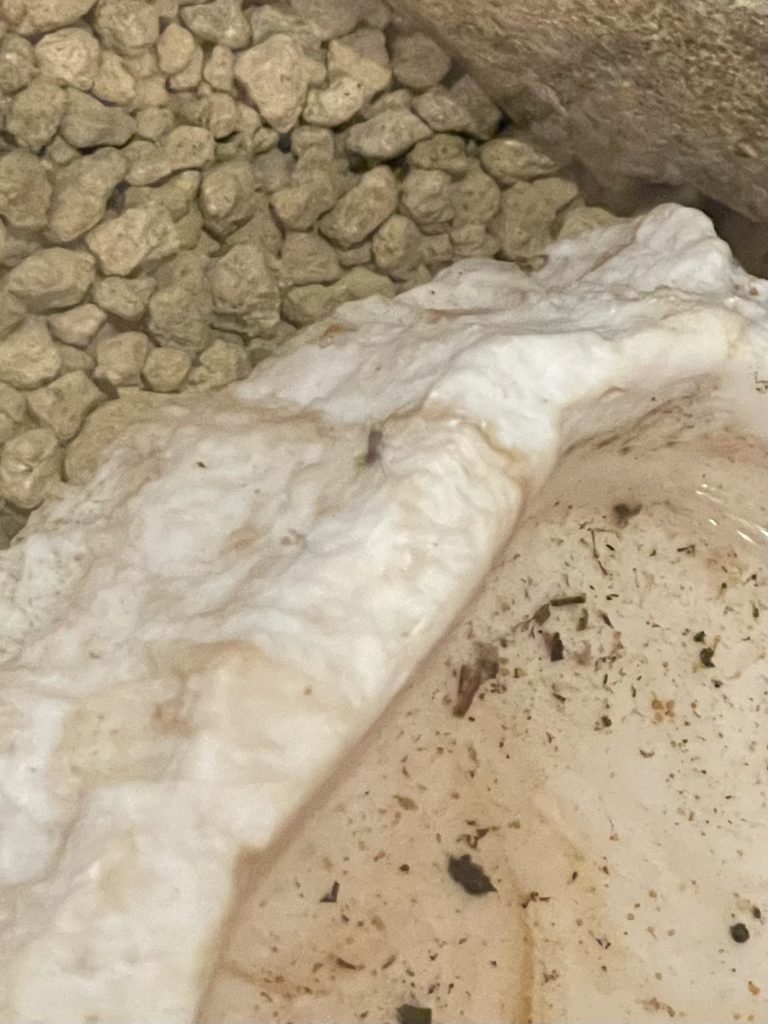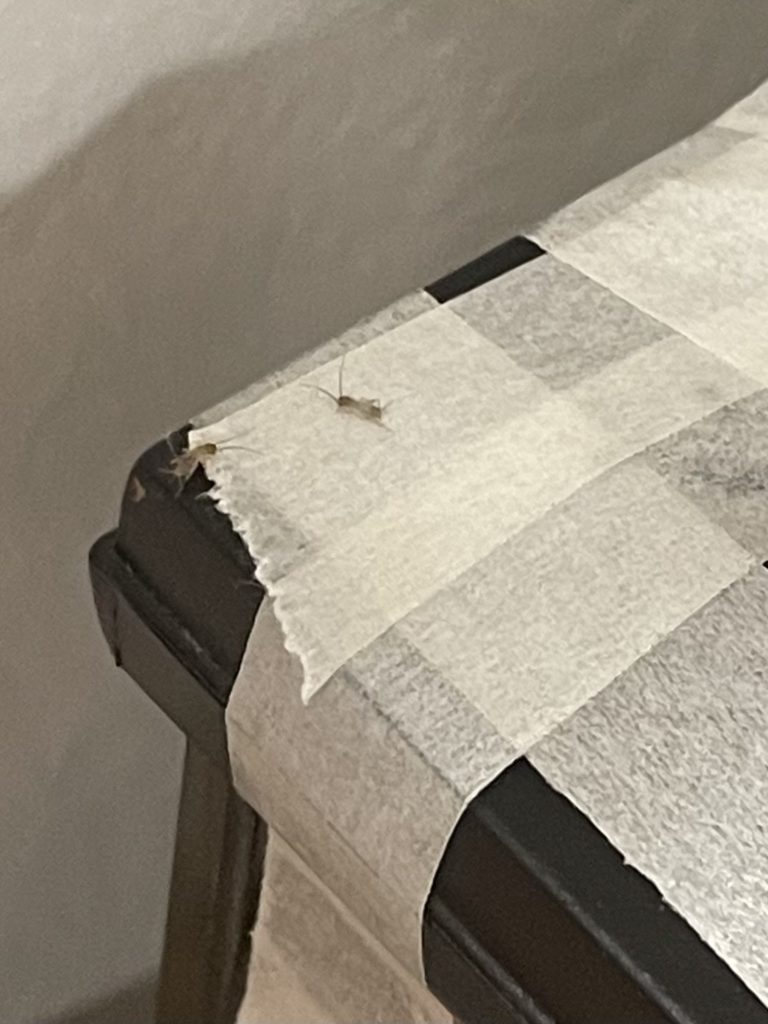omznです.
この記事はあくあたん工房 Advent Calendar 2022の16日目です.
2日目のヒョウモントカゲモドキさんのお話に引き続き,今度はヒョウモントカゲモドキさんの生き餌,コオロギ飼育のお話です.
警告: 今回は虫成分多目です.
ヒョウモントカゲモドキは人工飼料も食べますが,生きたコオロギや冷凍コオロギもよく食べます.
気分屋なので,あるときは人工飼料しか食べなかったり,あるときはコオロギしか食べなかったりします.
コオロギは野山で採集してきても良いのですが,コオロギファームから養殖コオロギを購入するのも手軽です.
養殖コオロギは「ヨーロッパイエコオロギ」,通称イエコという種が有名です.
西南アジアが原産国のようで,ペットや餌用として世界中に広まっている種類です.
爬虫類を扱う別途ショップなら1匹15円程度,通販なら1匹5円程度で手に入ります.
1年中繁殖可能で2,3ヶ月程度で成虫になりますので,きちんと世話ができるなら素人でも養殖できます.
餌が勝手に育ってくれて,どんどん供給されるならこんな嬉しい話はありません.
だれもが一度はコオロギ養殖を夢見ることになります.
さて,omznも例に漏れず,イエコを養殖してみようと思った次第です.
手始めにネットショップでイエコ成虫を400匹購入しました.200匹はすぐに冷凍して,200匹を飼ってみることにします.
ケージは掃除が楽なように,底床などは一切敷かず,トイレットペーパーの芯で作った隠れ家,水を供給するタッパ,そして産卵のための土のタッパを置きます.
どどっと200匹を放り込んだ状態がこれです.
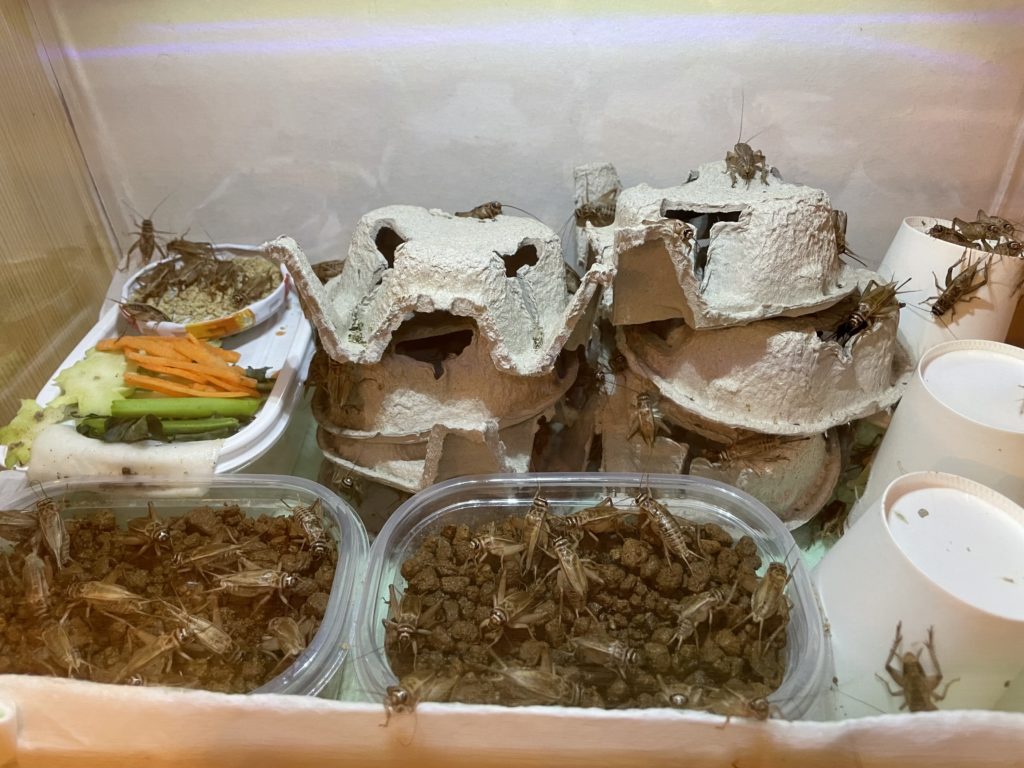
メスたちは一斉に土に産卵を開始します.卵が土からはみ出るぐらいまでびっしりと卵が採れます.
200匹も少しずつ捕獲して冷凍していき,最終的にはすべてを冷凍するので,卵だけが残ります.
あとはこれを一定の温度・湿度を保ったまま2週間保持します.
2週間後,孵化しました.すごい勢いで体調1mm程度の幼虫がわいてきます.
これを大きくなるまで育てれば,十分な数の冷凍コオロギが確保でき,また,産卵するのに十分な数が残るでしょう.
自家製コオロギ牧場への第一歩をここで踏み出したのです.
さて,ヒョウモントカゲモドキのケージ内には,生き餌として与えようとしたけど,うまく逃げおおせて隠れたコオロギがいます.彼らも当然卵を産めます.
土はいくらでもあります.仮に捕食されても卵は残ります.温度湿度も問題なく維持されています.
当然,2週間ほど経つとケージ内でも幼虫が孵化します.
あ,水飲み場の近くに小さい幼虫がいますね.かわいい〜.
このまま大きくなったら,セルフ餌供給も夢じゃないですね!
ここから怖い話をします.
コオロギ養殖のケージはコオロギがよじ登れないような形状になっているので,体長1mmの初令幼虫といえども,よじ登って逃げたりはできません.
しかし,ヒョウモントカゲモドキのケージはそうではありません.天井まで届く石組や流木はあるし,天井は網だし,扉はあるし,換気のために隙間だらけです.
コオロギの雌は20個〜30個の卵を産みます.何匹が隠れているんだったかな…
おや,この原稿を書いている時に,何かが視界の端で動いた気がしますね….
いや,そんなまさか.
いやいや.
百歩譲って,幼虫が脱走したとしても,室内には食べ物も無いし,水も無いから,コオロギにとっては砂漠以下の環境のはず.
成虫になんかなれるわけないですよね.
ところで,このコオロギの名前って何でしたっけ.
「ヨーロッパイエコオロギ」
いやいや,そんなまさか.
